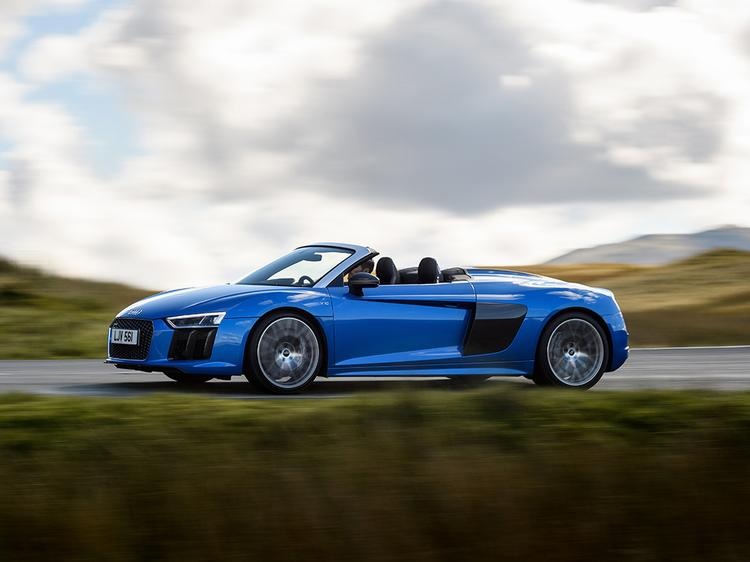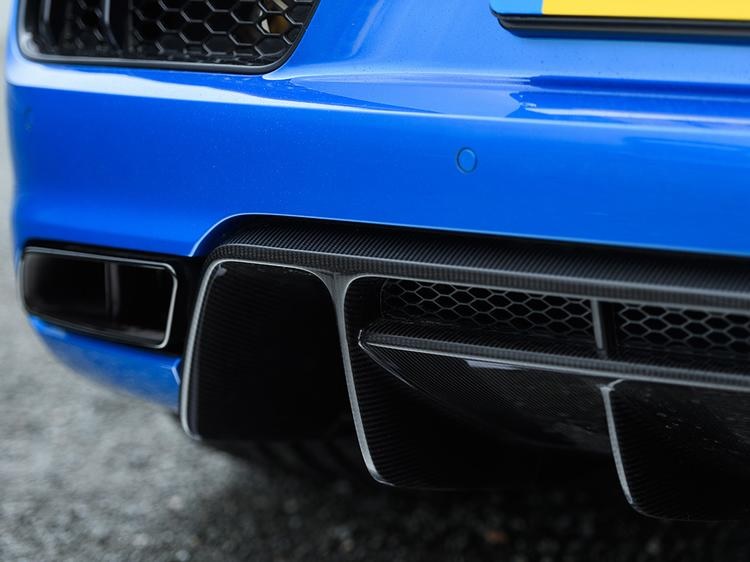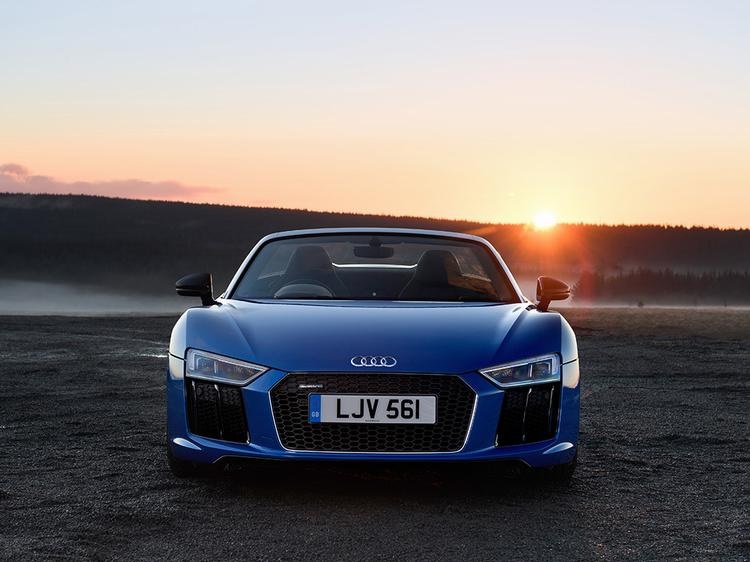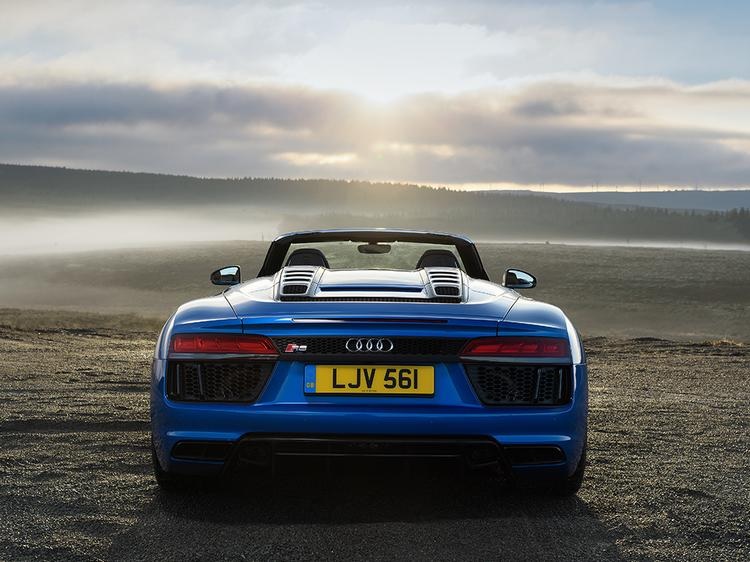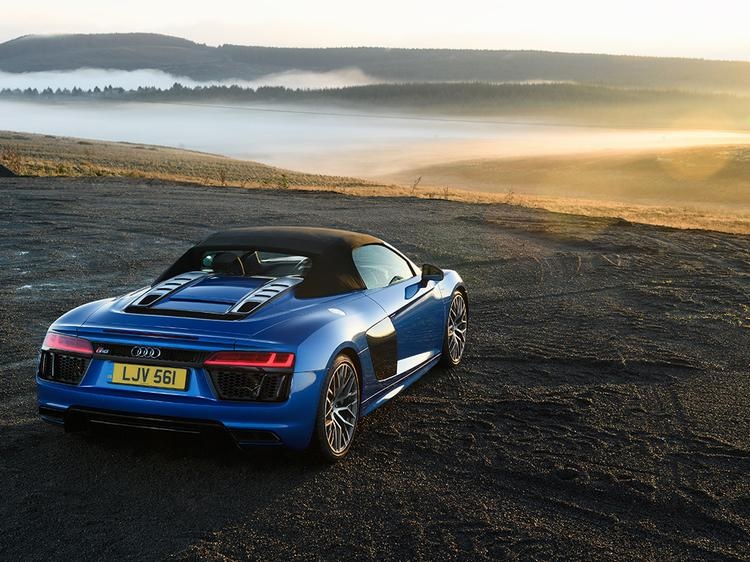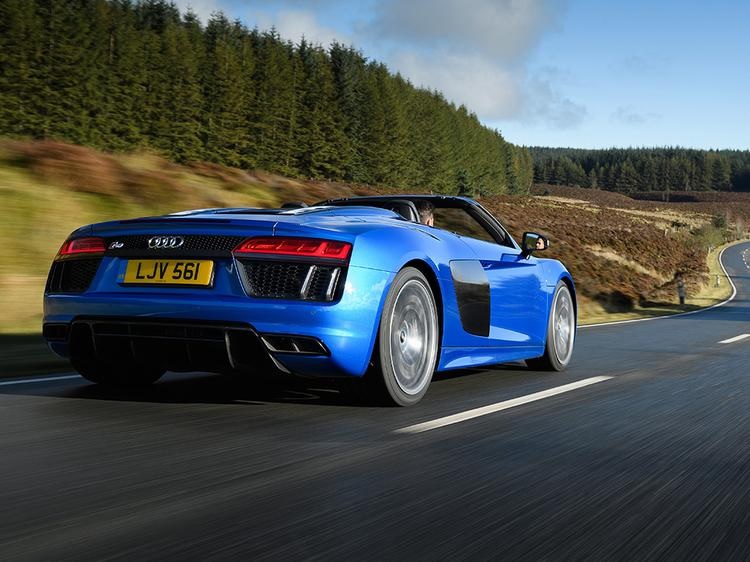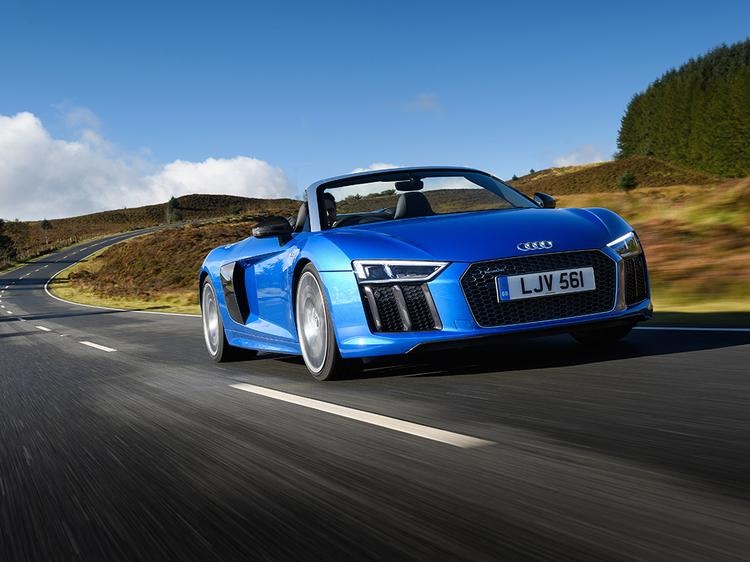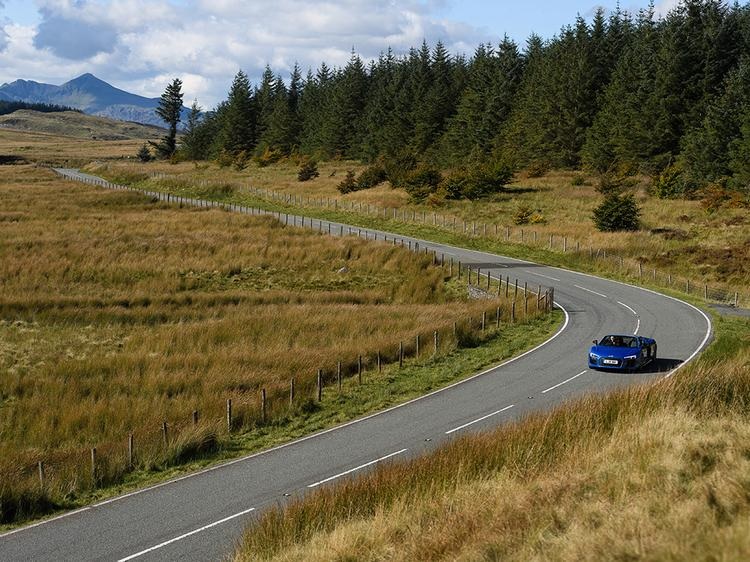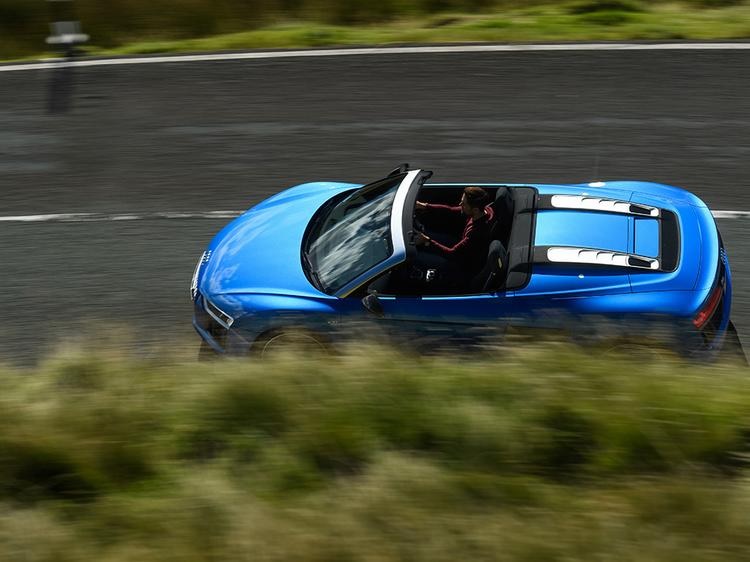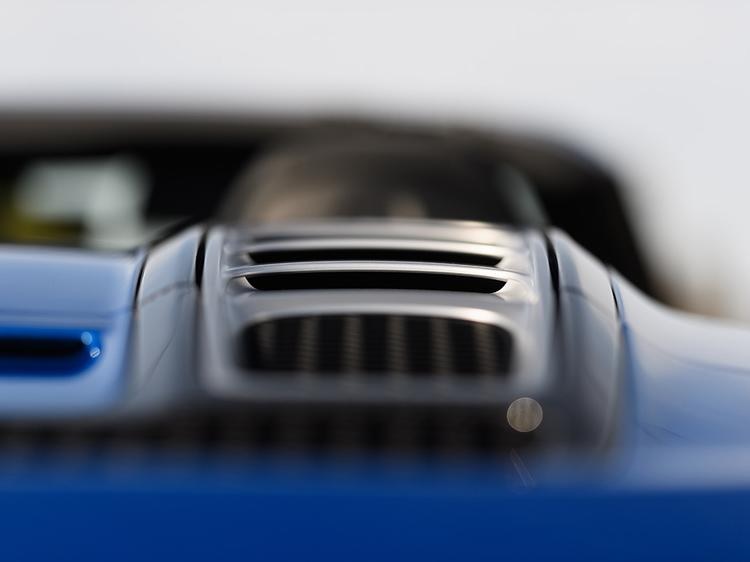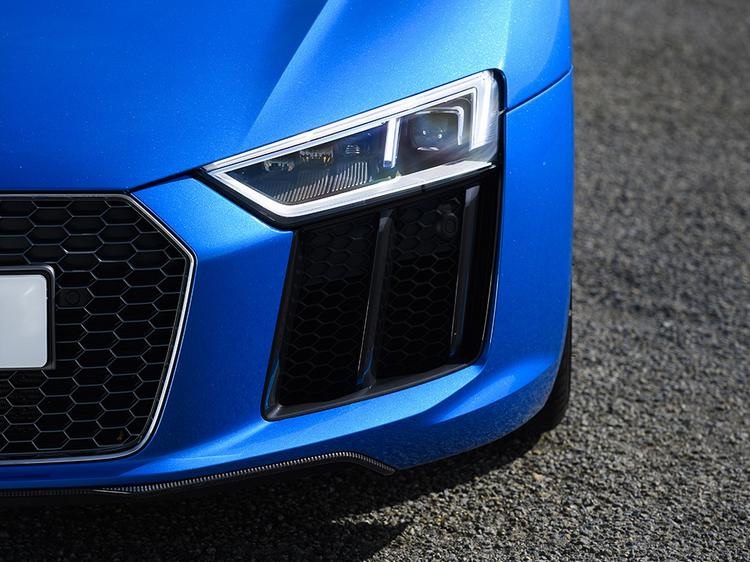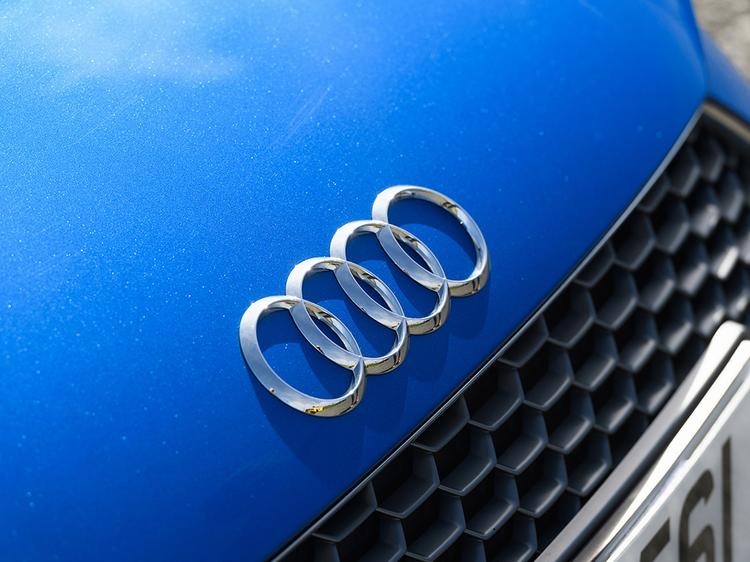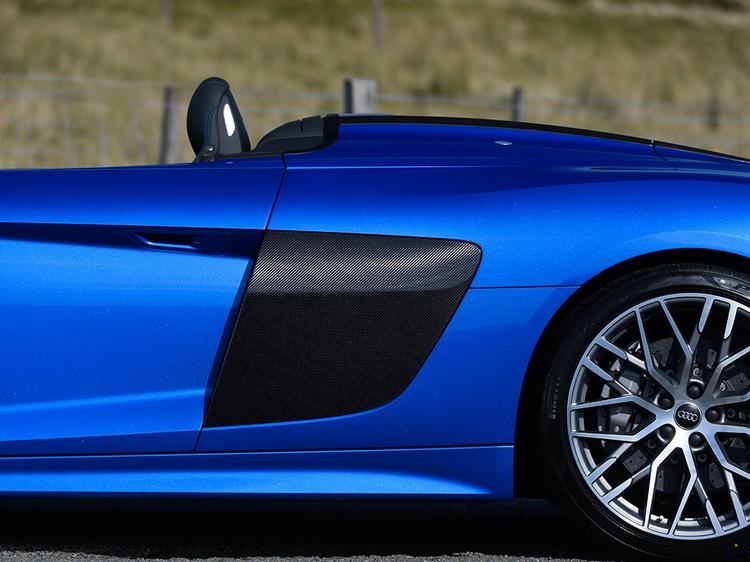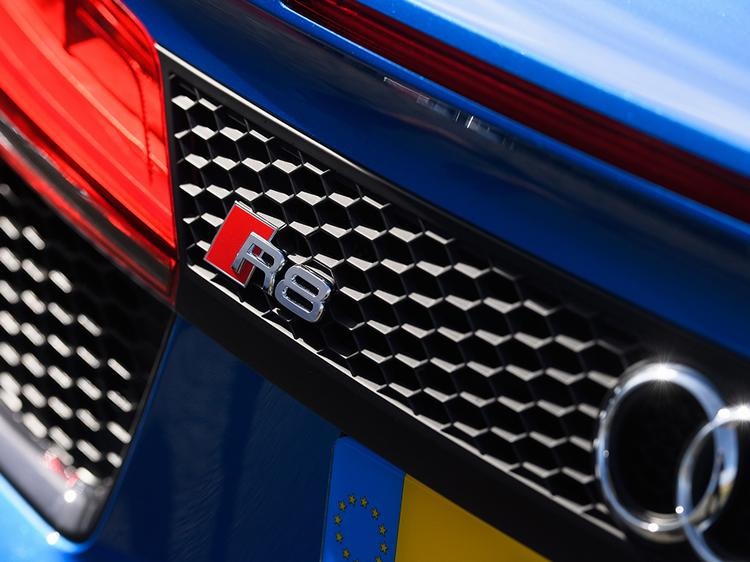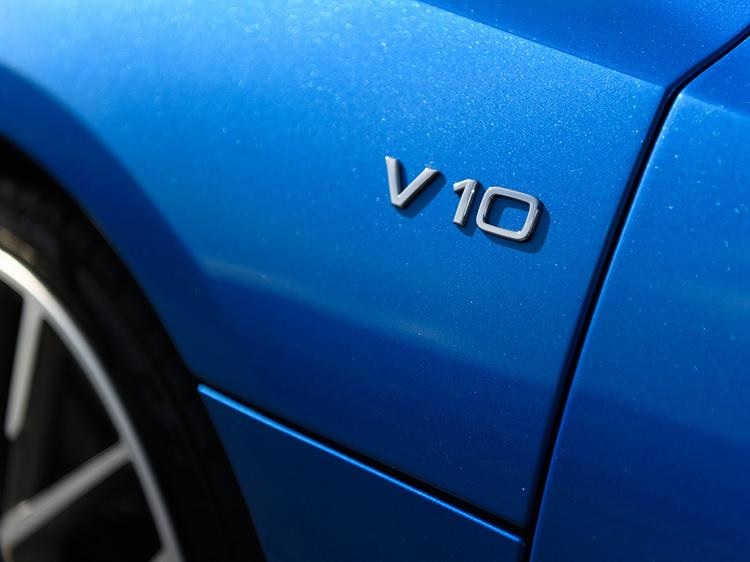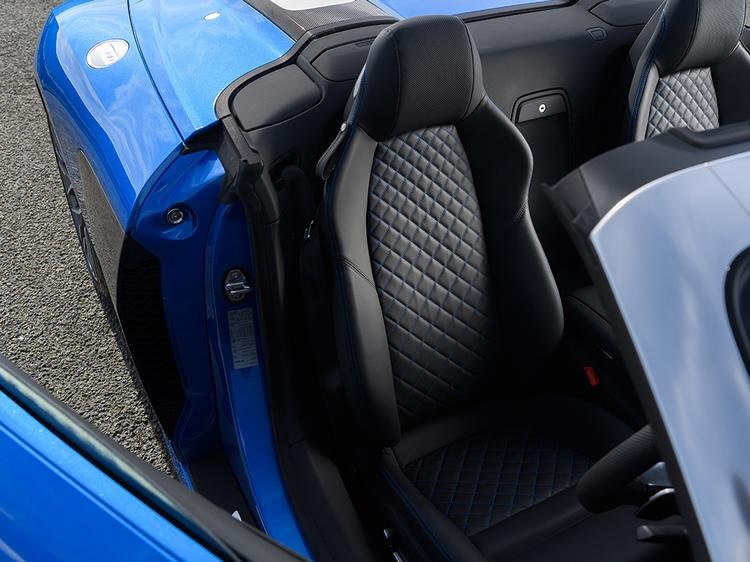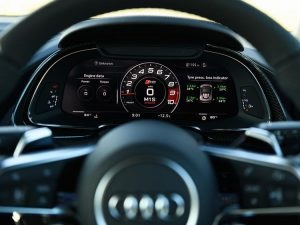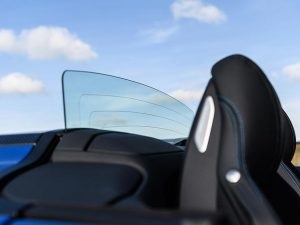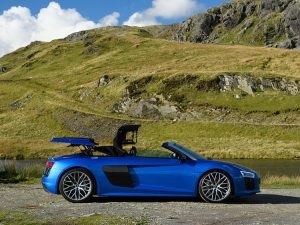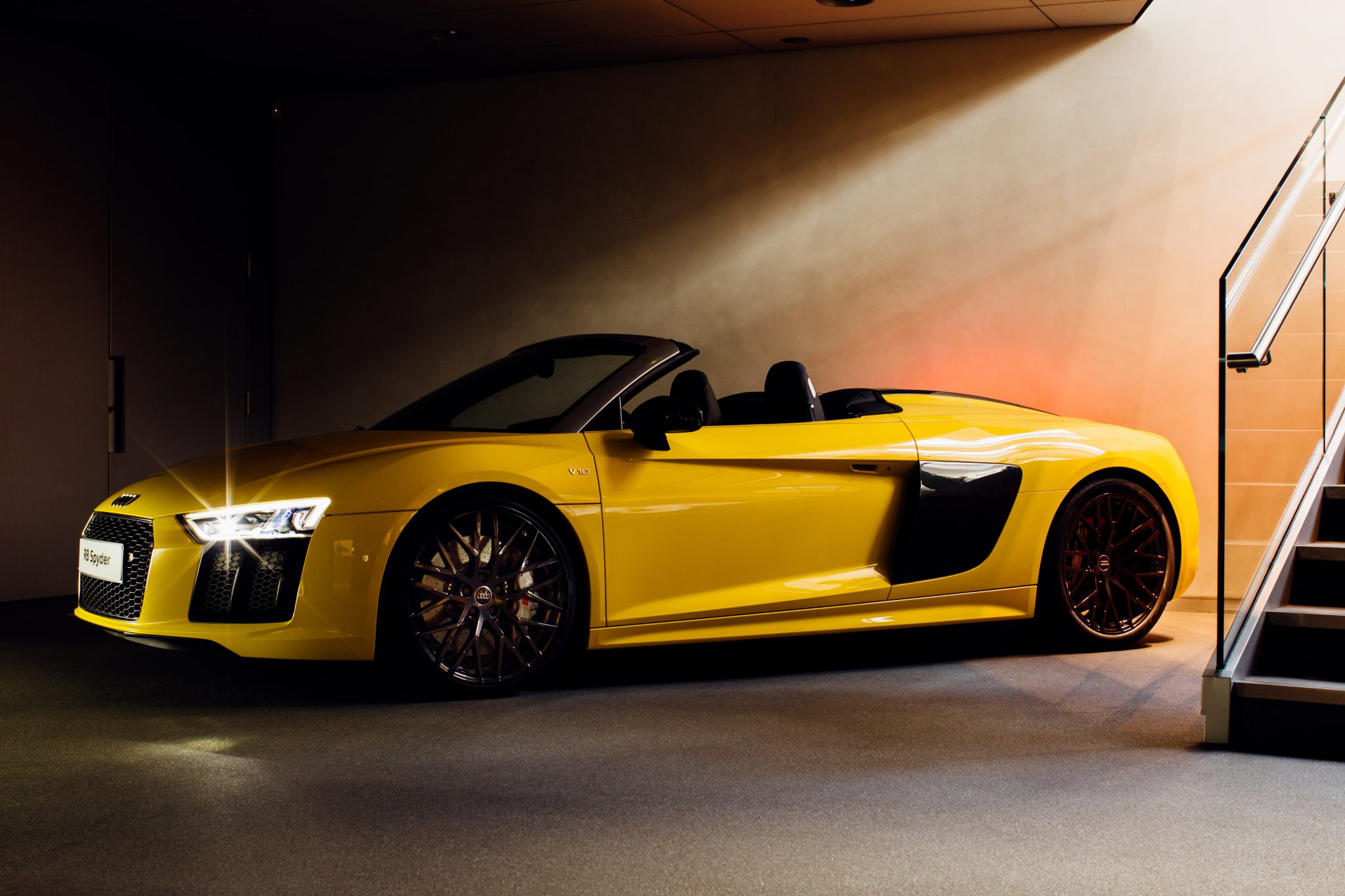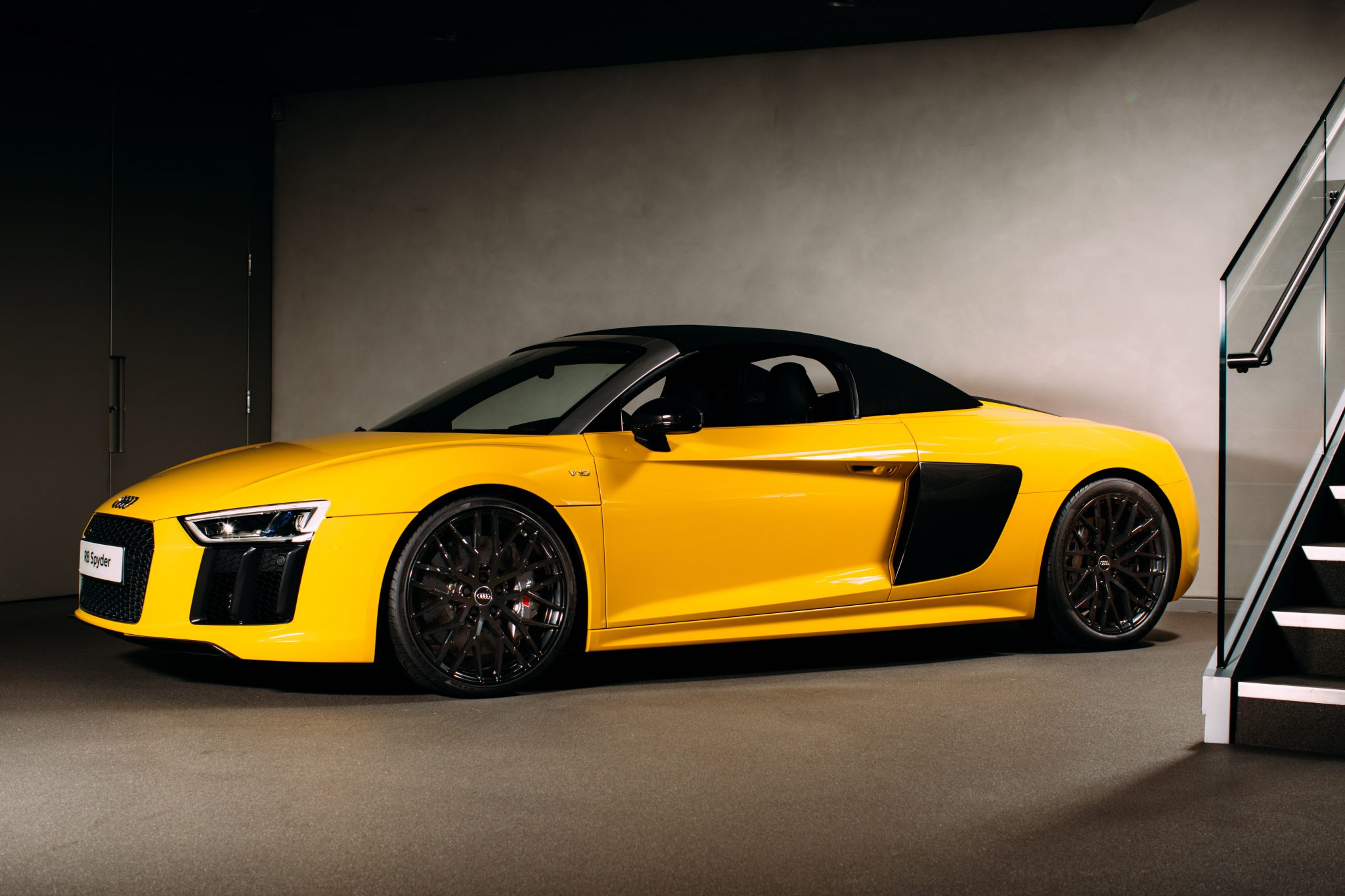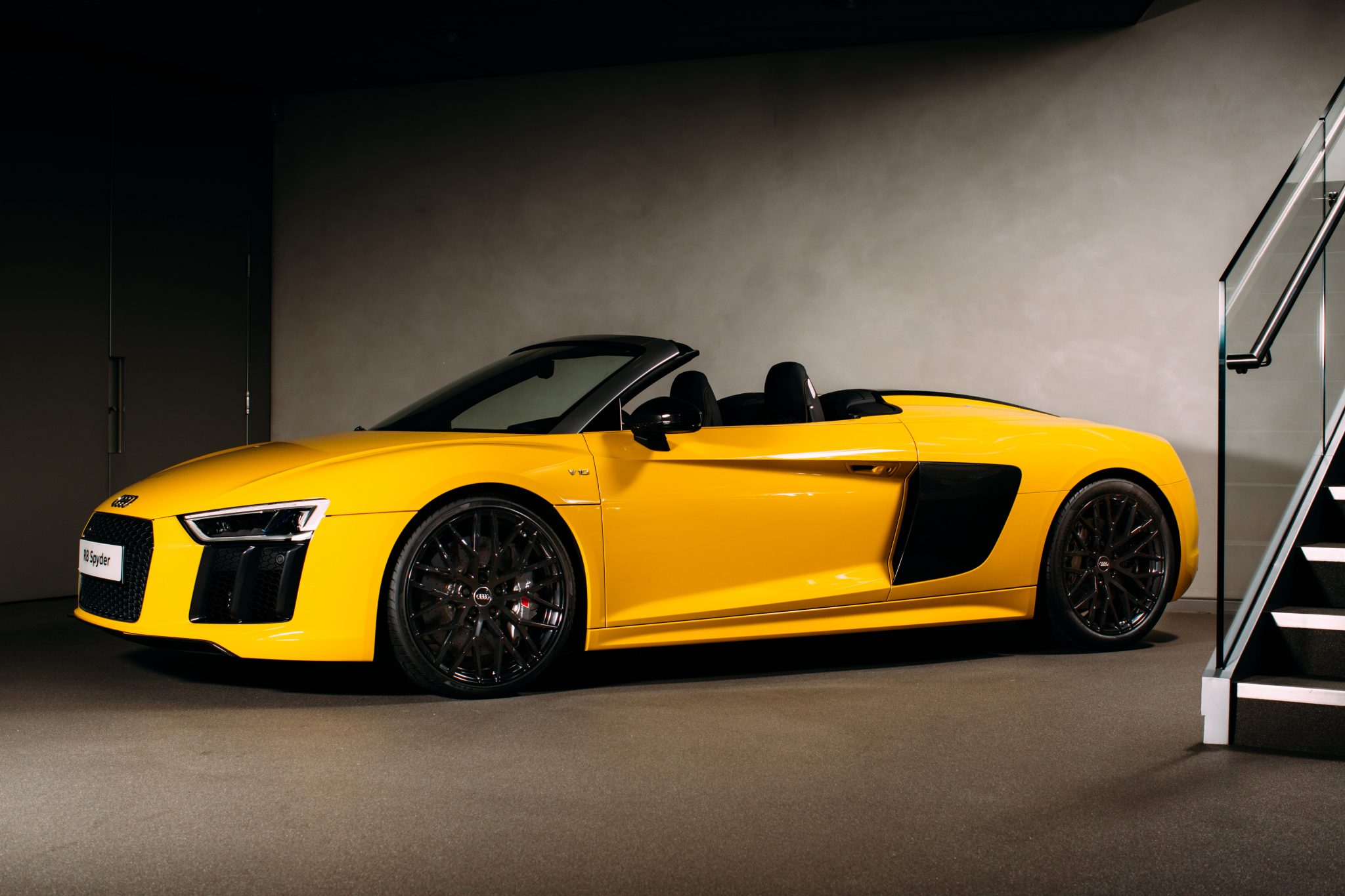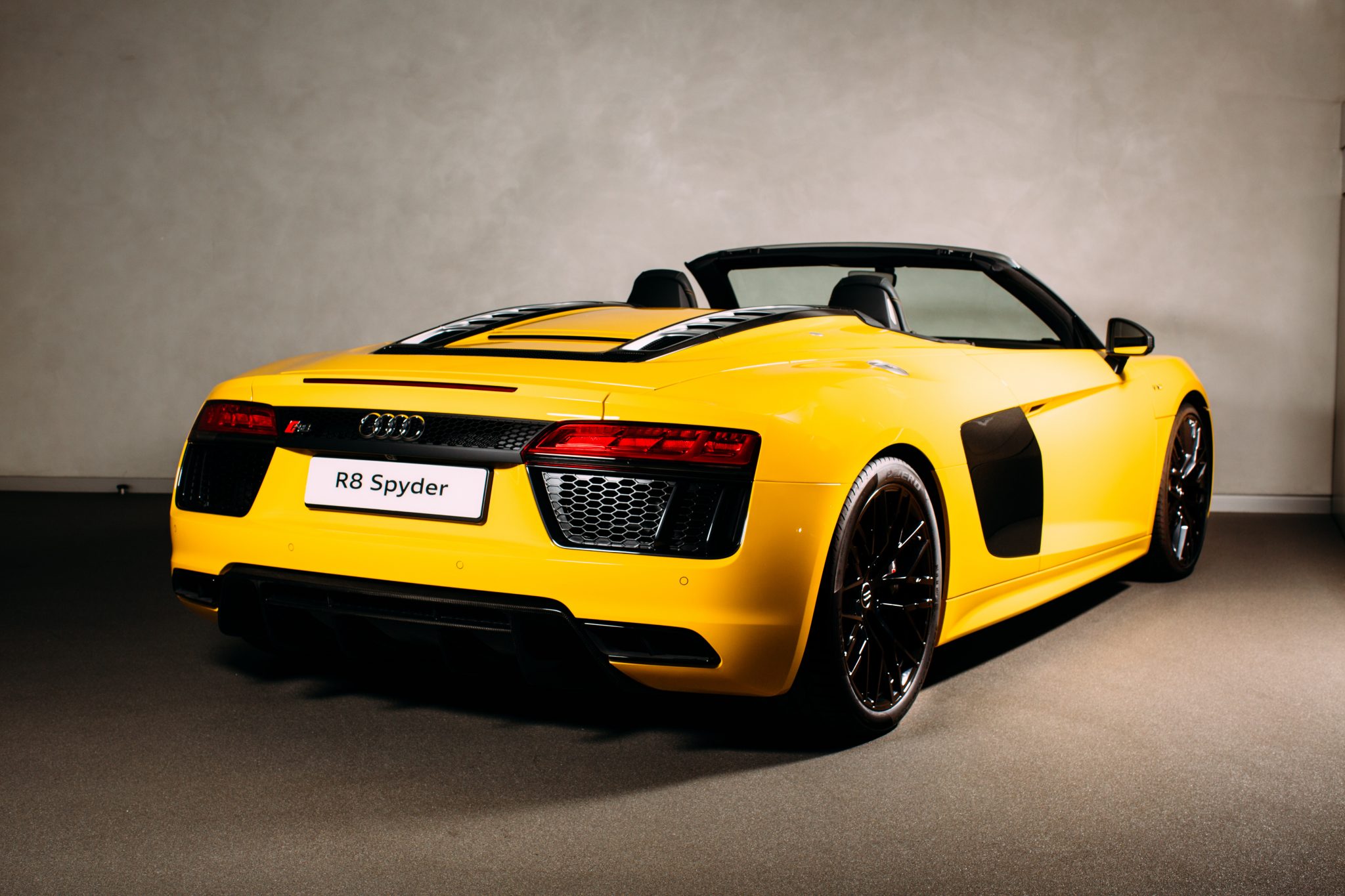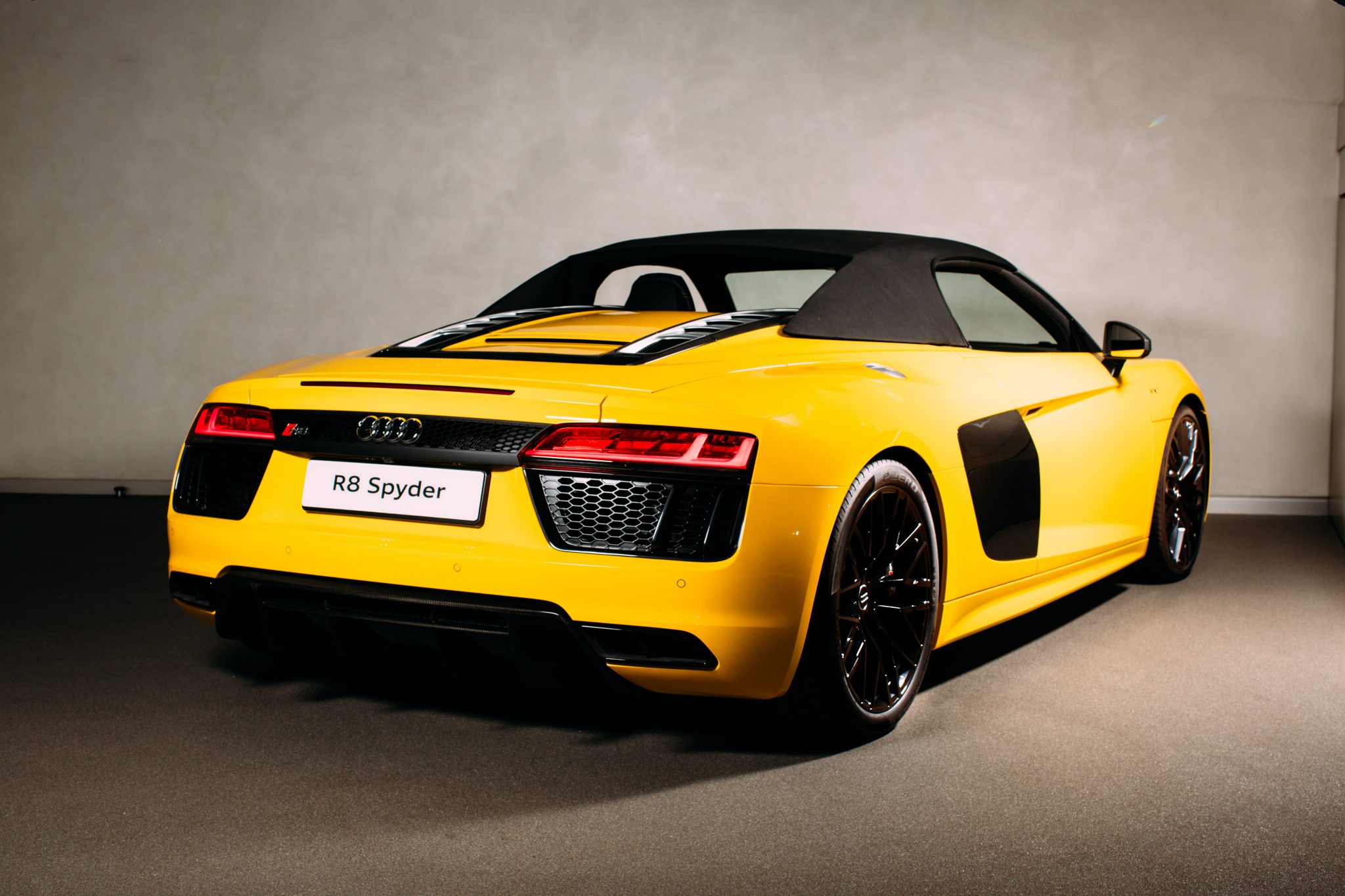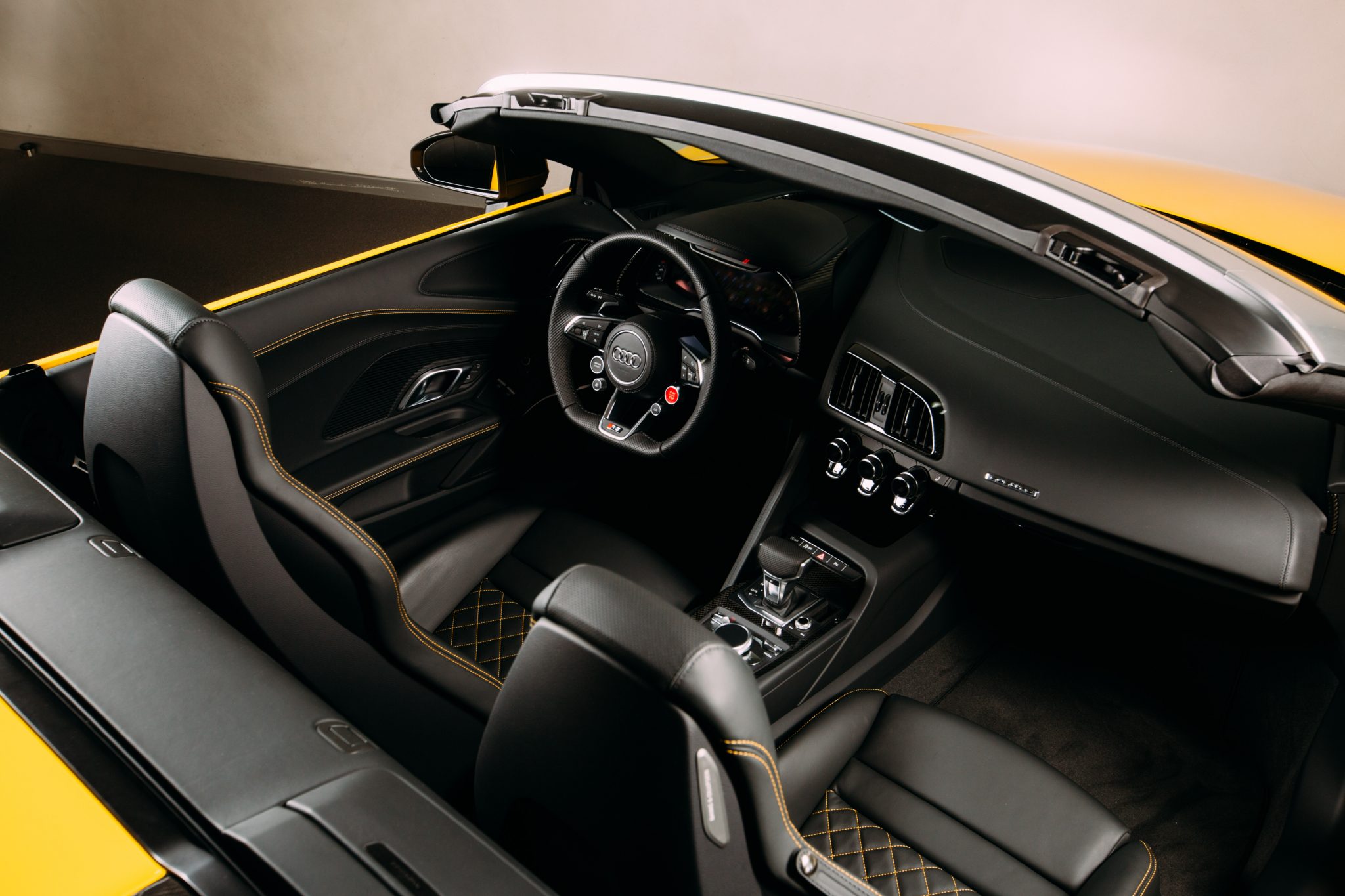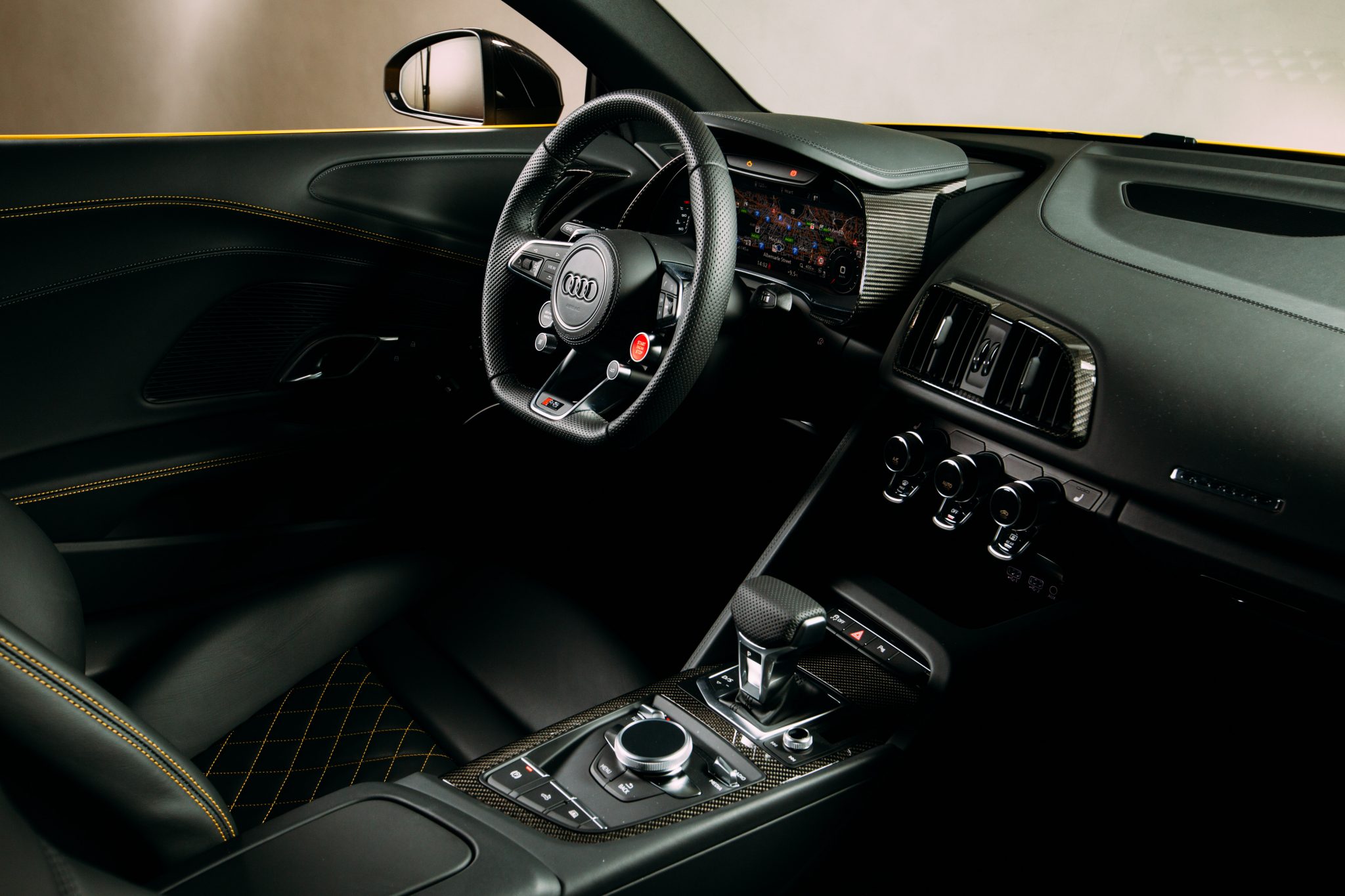The Audi R8 Spyder is the heaviest, slowest and, arguably, the R8 for posers as much as drivers. But I’m not far into my drive before thinking it could be the best yet.
That must make me a shameless poser then. Given my first action before departing the launch venue was to press the noisy exhaust button and my second was to drop the roof I guess that would confirm it. But I’ll work on the basis most people buying a V10-powered open-topped supercar aren’t doing so to slip under the radar. Call it the road testing equivalent of method acting…
The coupe version of the R8 with which we are already familiar is a more than satisfying steer. But, as previously discussed, there’s a danger its all-round competence rather saves the best of the show for onlookers rather than the driver.
Its highlight remains that naturally aspirated 5.2-litre V10 engine; the R8 and the Lamborghini Huracan with which it shares its powertrain and hybrid carbon/aluminum Modular Sportscar System platform likely the last atmospheric-engined mainstream sports/supercars we’ll see. May as well make the most of it.
No matter this is the ‘low power’ version of the R8’s 5.2-litre V10, with 540hp as per the regular V10 coupe. That car costs £119K, the Spyder commanding a premium of £10,000 to a starting price of £129,990 while the full-fat V10 Plus, with its Huracan-matching 610hp, starts at £134,520.
Outside of the R8 range it’s pretty clear what car Audi has in its sights with this new Spyder too – in one of those spooky coincidences the Porsche 911 Turbo Cabriolet costs £135,766 and also has 540hp, albeit with an over boosted 523lb ft of torque that makes the Audi’s naturally aspirated 398lb ft at 6,500rpm look a little breathless in comparison.
There’s a 580hp S version of the Turbo Cabrio too, of course, this costing £154,614. Audi’s not confirming a V10 Plus version of the Spyder yet. Nor is it denying it, though.
As per the coupe the main differences between V10 and V10 Plus, other than the power, include different gearing to group the first six ratios together and use seventh as an overdrive. In the Plus they’re evenly spaced. The Plus also gets standard ceramic brakes over the regular ‘wavy’ steel rotors, carbon blades and mirror housings, a rear wing, fixed-back seats and an additional three-way Performance selector in addition to the four-step Audi Drive Select, bringing the total ‘satellite’ button count on the wheel to four. These can be optioned onto the Spyder of course and all but the ‘race’ seats and rear wing feature on our test car, bringing the price to a burly £164,240 in total – see below for full details.
One other number rather stares out, that being a curb weight of 1,795kg with a not especially powerfully built 75kg driver onboard. Audi points out this is 25kg less than the previous V10 Spyder and the structure is a claimed 50 percent stiffer but it’s still 125kg more than the already pretty hefty coupe, 70kg heavier than the closely related Huracan Spyder and rather exposes on the “lightweight” claims of the aluminum Audi Space Frame construction.
We’ve got used to modern cars being heavy though and manufacturers have got very good at hiding the extra flab behind a girdle of technology, helping you forget that with a mate and a bit of luggage onboard an R8 Spyder could easily be a two-tonne machine.
At a superficial level, it certainly doesn’t feel burdened by excess kilos either. The noise from the V10 definitely helps here, the dramatic flare of barely silenced revs on start up setting the scene. Once over its dramatic warm-up cycle, it quietens down but you’ll likely be straight on the exhaust button to make it loud again. Because the engine’s theatrics are a defining feature and, arguably, pack a more emotive punch than the 911 Turbo’s additional power.
It also rather exposes the curious argument made by a few keyboard warriors that a TT RS is basically a half-price R8 because it’s only a tenth slower to 62mph. It’s not. The R8 is a genuinely dramatic supercar with an engine to match, the like of which we likely won’t see again. And the Spyder lets you enjoy it to the full, even if you keep the hood up and just drop the small vertical rear screen to savour the sound effects.
It’s rather more exciting to drive than a TT too. Peak power is at 7,800rpm and you don’t get your full torque quota until 6,500rpm, 1,500rpm beyond the point where the 911 Turbo has given you its best. So you need revs. And a bit of space to wind it up. But the response to the throttle and the sensations it unleashes means that is no hardship, the (now compulsory) S Tronic dual-clutch seamlessly blurring shifts and acceleration into one thrilling crescendo. Well, it would be it not for such things as wanting to maintain a grip on your license. Because opportunities to really let rip are frustratingly few and limited to the odd overly-dramatic squirt here and there.
And throughout all this, you’re never aware of the extra kilos. It might weigh nearly as much as an SL63 but in driving style, it feels more like a computer simulation of a plus-size Lotus Elise.
The stiffness of the structure helps, there being a very Audi sense of solidity to the R8’s construction and no nasty shudders or wobbles even when attacking properly evil stretches of British B-road. It’s near-impossible to praise Audi quality without slipping into cliche but in both style and the way it’s screwed together, there’s plenty to delight the occupants if little to particularly surprise.
The Virtual Cockpit display is really, really good, the button-strewn wheel actually makes some sense and pretty much every interaction with the car feels satisfyingly well thought out. Roof up it’s quiet and refined, roof down just the right side of windblown to be exciting without making you wish you’d put the hood back up for the motorway sections. It’ll do its thing at up to 30mph too, increasing the scope for switching on the fly.
The harder you drive the Spyder the more you realise why features like Dynamic Steering, the sports exhaust and Magnetic Dampers (available separately but saving over a grand when bundled into the Sports Plus Package) are required to contrive that sense of agility. Of all the plethora of modes available the only two you really need are Comfort in Audi Drive Select for mooching and ‘Dry’ on the Performance Control (if you specced it) for maximum attack. This locks out the Dynamic Steering to a fixed ratio and is as close as you can get to genuine feedback from the car. Which is to say not a whole lot.
This also sets the dampers to their firmer setting but it never gets unruly, flowing beautifully with the road without even a hint of secondary thump or shudder. It also relaxes the stability control a tad, suggesting it can be provoked into some angles once you navigate past the default understeer.
You’ll be going some to get even a hint of this at road speeds though, the ‘reverse Haldex’ powertrain configuration rear-biased of course but more dedicated to keeping you on the straight and narrow than the first-gen car.
It’s accordingly very, very fast and extremely capable. If possibly a little remote as a result. Meaning the R8 Spyder is best savoured as an overall experience, rather than purely a driving one. Something it pulls off with arguably more success than the coupe.
2016 Audi R8 Spyder Press Release
Faster, tauter, technology-packed Audi convertible super sports car makes its domestic debut at the UK epicentre of Vorsprung durch Technik
- UK debut of all-new convertible R8 at Audi City London in Piccadilly
- Available for UK order from late spring, first UK deliveries in late 2016
- V10 engine developing 540PS, from 0 to 62mph in 3.6 seconds
- Audi Space Frame with 50 percent improvement in rigidity
- R8 debut for Audi smartphone interface and Bang & Olufsen audio with headrest-mounted speakers
Piccadilly, April 25, 2016 – A landmark Audi location in the heart of London is the fitting backdrop for the UK debut of a new generation of the convertible super sports car lauded as a milestone for Vorsprung durch Technik – the all-new Audi R8 Spyder has taken centre stage for selected media guests at Audi City in Piccadilly. Appealing to purists with its naturally aspirated V10 power, and to technophiles with sophisticated new features including the fully digital Audi Virtual Cockpit, the latest open-air R8 is not only more powerful and quicker against the clock, but also even more tightly pinned to challenging roads thanks in part to a 50 per cent improvement in torsional rigidity.
The key point of differentiation between Coupe and Spyder R8 models is of course the lightweight cloth hood, which tapers into two fins that stretch the cloth so that the roof harmonises perfectly with the dramatic lines of the high-performance sports car. Opening and closure is fully automated, and at speeds of up to 31mph the hood can be slickly concealed beneath the sculpted integral cover, or reattached to shield occupants from a sharp shower, in just 20 seconds. The rear window, sunk into the bulkhead, can also be retracted and extended at the touch of a button.
The strong backbone of the new R8 Spyder is the newly developed multi-material Audi Space Frame (ASF) which incorporates an intelligent mix of aluminium and carbon fibre that helps to keep dry weight down to just 1,612kg. Aluminium components make up a fraction under 80 per cent of the weight. They form a lattice that Audi’s engineers have used to incorporate specific reinforcements especially into the sills, A-pillars and windscreen frame. Combined with innovative manufacturing methods that lower the weight of individual components by up to ten per cent, these pare the weight of the body back to just 208 kilograms and boost torsional rigidity by over 50 per cent compared with the previous model.
Strong motorsport DNA: the V10 power unit
The even greater structural integrity provides an even more effective operating environment for a new iteration of the potent mid-mounted ten-cylinder engine. The latest V10 retains the purity of natural aspiration but adds advanced features such as dual injection and a freewheeling mode which enables it to ‘decouple’ whenever possible to optimise response and improve fuel economy by ten per cent. 540PS of power and 540 Nm (398.3 lb-ft) of torque at 6,500 rpm deliver phenomenal road performance, with the 0 to 62mph sprint taking just 3.6 seconds on the way to a top speed of 197mph, but the latest R8 Spyder is also capable of returning up to 24.1mpg, corresponding to 277 grams CO2 per kilometre.
Behind the V10 there is a seven-speed S tronic dual-clutch transmission delivering lightning-fast shifts, which channels power to a newly designed quattro drive system with an electro-hydraulically activated multi-plate clutch at the front axle. It can distribute drive fully variably according to the situation, and in extreme cases can transfer up to 100 percent to the front or rear wheels.
The intelligent control system is incorporated into the Audi drive select system, which offers four modes ranging from overtly dynamic to comfort-oriented. In conjunction with the optional R8 performance leather steering wheel, three more driving programs are available: dry, wet and snow. They make handling even more precise and stable, to match the specific conditions of the road being travelled.
The controls place the focus squarely on the driver, who can operate all important functions with the multifunction and satellite push-buttons without having to take hands off the steering wheel or look away from the road. The large 12.3-inch, fully digital Audi virtual cockpit presents all information using rich 3D graphics.
The internet-based services delivered by Audi connect come as standard in the R8 Spyder, as does the intuitively operated MMI navigation plus with MMI touch, the Audi Music Interface and belt microphones which make it even easier to use natural-language voice control and the phone. MMI search, which makes search suggestions after input of just the first few letters, offers a shortcut to the required information.
The Audi smartphone interface, which made its debut in the Q7 and A4 model lines, is also adopted by the second generation R8 Spyder. It enables selected content from compatible iOS and Android smartphones to be displayed by the Audi virtual cockpit. The Audi phone box can also be specified to connect mobile phones to the car aerial and charge them inductively. The Bang & Olufsen Sound System is another highlight: For the first time, it plays through two head restraint loudspeakers mounted in each seat, for an excellent audio experience even when driving with the hood down.
Largely hand-built
The build quality of the new R8 Spyder, which is largely hand-built at a special facility near Neckarsulm, Germany, is of the highest standard. Over and above the extensive standard equipment, customers have almost unlimited scope to tailor both the interior and exterior to their individual preferences. Body components such as the front spoiler, the diffuser and the new sideblades are also available in carbon. LED headlights with newly developed laser technology can be added as an alternative to the standard all-LED headlights to maximise visibility and range for the driver, bringing increased safety at night.
The all-new R8 Spyder is making an early curtain call in London before becoming available to order later this spring. The first examples of the open-air super sports car will reach UK customers in late 2016.
2016 Audi R8 Spyder Photos
2016 Audi R8 Spyder Quick Specs
AUDI R8 SPYDER 5.2 V10
Engine: 5,201cc V10
Transmission: 7-speed dual clutch, four-wheel drive
Power (hp): 540@7,800rpm
Torque (lb ft): 398@6,500rpm
0-62mph: 3.6sec
Top speed: 197mph
Weight: 1,612kg (dry)/1,795kg (with fluids and 75kg driver)
MPG: 24.1mpg
CO2: 277g/km
2016 Audi R8 Spyder Videos
https://www.youtube.com/watch?v=Fi9WugcV5EI


